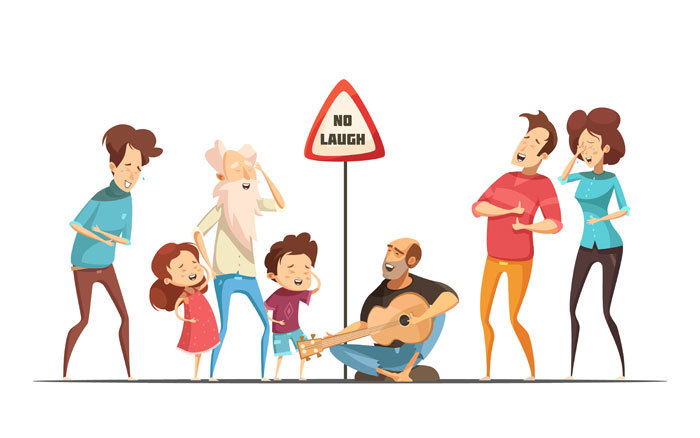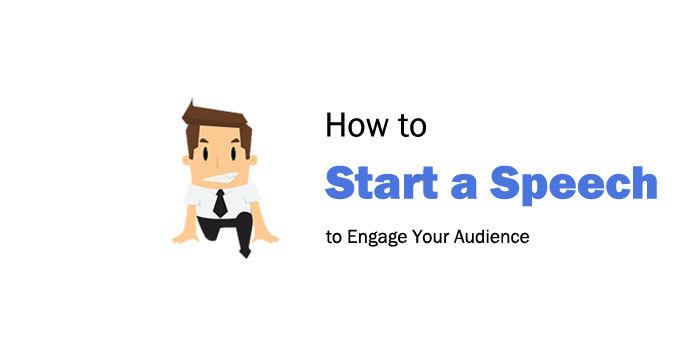Presentation Opening: 10 Ways to Start a Speech to Engage Your Audience
When you’re giving a speech, it goes without saying that you want your audience to be attentive and engaged.
You’ve probably spent a lot of time crafting what you have to say. And, you want participants to listen and really understand your message.
As you can appreciate, your opening few lines can make or break your presentation. You’ll either have people sitting quietly and paying attention or already beginning to zone out.
So, what’s the key to starting a speech well? The good new is that there are quite a number of great ways to begin.
Your aim is to create interest and set the tone for the rest of your presentation.
Some openers might fit better with certain types of speeches. For example, if you’re seeking to inspire your audience, a motivational quote might be the best method to use.
Having said that, many of these tips can be applied to a variety of different kinds of speeches. Read on for some great advice!
10 Engaging Ways to Start a Speech
Kick off with a quote
Quoting someone is a great way to start off.
A quote can be motivational, thought-provoking, humorous or lead to some other reaction entirely.
People love quotes. They’re short succent capsules of ways of looking at the world, often infused with considerable wisdom.

If you can quote a well-known person, this will suggest that your speech has real credibility. Your audience will want to know how the quote supports what you have to say.
Look for something that best introduces your speech topic. Then, expand on the idea behind the quote and show its relevance to the information you’re presenting to the audience, reflecting back on the message in the quote along the way.
Another take on this is to recite a short poem. A few rhyming lines, or a haiku, can pique your audience’s curiosity.
Either way, those listening to you will be very attuned to what comes next!
Tell a tale
How many times have your ears perked up when you overhear a fragment of conversation in a coffee shop or restaurant?
Telling and retelling personal stories is a powerful way that humans relate to one another. We gauge our own experience by that of others, and offer comfort or congratulations, as appropriate.
Starting your speech with a tale comes in a few flavours. Here they are:
Each of these approaches can be very effective in drawing participants in. They’ll want to know how the story unfolds, and ponder its relevance to them.
What’s more, participants may be reciting your tale to others and, with each repeating of the story, they’ll remember your speech for years to come.
Quiz them with a question
When people come to hear your talk, they’ll be preparing to listen – not respond.
So, when you begin by asking a question you’ve turned the tables on them, so to speak. This unexpected move gets their immediate attention.
Participants don’t want to be left behind, so they’ll be compelled to listen up to find out how to respond. Here are a several ways you can do this:
For added emphasis, you can follow up any of these types of questions with a second one. Your audience will be captivated and want to know how your talk expands on these questions.
Spark their imagination
Take your listeners on a journey with you by asking them to visualize being in a situation. This is all the more powerful if you request that they close their eyes for a few minutes.
Begin by asking them to take a few breaths and clear their minds. Then, describe the circumstance you want them to place themselves in.
For instance, if you’re speaking about the importance of environmental sustainability you could have them see a beautiful beach in their mind’s eye with clear water and abundant sea creatures.
Taking this example further, you can then offer a big idea.
Encourage listeners to think about a huge related goal or the ability to have personal influence. A possible question is: “What if you could save every endangered species in the ocean?”.

One impactful way to have them use their imagination is with fairy tale language. Words like “Long ago and far away, there lived . . .” or “Once upon a time . . .” can put participants in the mood to dream about another reality.
The reason this works is that it’s both entertaining and inspiring. People will perceive that they’re in for a unique speech that’s worth their investment of time.
You might also like: How to Tell a Tall Tale Speech
State your claim
Make a powerful statement of some sort. Better yet, repeat your assertion for effect and pause to let your audience digest what you’ve said.
You could be exposing a problem. For instance, if you’re giving a talk on mental health you might open with a statement about how stigma around mental illness can lead to suicide.
Alternatively, you can declare your opinion. This approach is particularly effective if you’re able to back your opinion up with your expertise.
For instance, if your topic and professional background relate to global warming you might say “As a climate scientist . . .”

Busting a myth is another way to go. Intrigue your audience by giving them factual information that runs counter to what they assume about a given topic.
You can also make a claim about your speech itself.
Tell observers up front how they’ll benefit from your talk. Are they going to be moved to tears? Will they be entertained, or better informed?
Support your claim with a fascinating fact, or statistic, can leave your listeners wanting to learn more.
Beginning your speech this way will let your listeners know immediately that you feel strongly about your topic, and they’ll be eager to hear why.
Demand an action
This idea is somewhat similar to asking a question. It’s an ‘out of the blue’ way to request that listeners pay attention.
Your demand might be as easy as having people introduce themselves to the person sitting next to them, or as difficult as requesting them to make a commitment to stop using disposable plastics.
People may feel a little uncomfortable with what you’re asking, or they might be ready to jump to action.
Whatever their initial response, you’ll certainly have you audience thinking about what you’re saying and trying to anticipate what comes next!
Start with silence
Here’s a simple yet impactful way to begin your talk.
Starting off with silence might seem counterintuitive. After all, you’re anxious to have people hear your speech.
Rather than rushing in, it can be quite effective to not talk right away. Standing confidently on the stage without uttering a word has the impact of quietening the audience.
In simple terms, it lets them know that your speech is about to begin and their attention is needed.
Sure, people may shift in their seats and exchange a few quiet comments. But, give it time and slowly all eyes will be on you.
Strive for about 10 to 15 seconds so it isn’t interpreted as nervousness.
We talk about this in our impromptu speaking guide as well.
Perform your personality
Try opening by revealing your personality a little.
This lets others see you as a real person, like them, and not just a talking head. Therefore, they’ll be more ready to give you their ear.

Here are a couple of things to experiment with:
Make it visual
Using a visual aid is a tried-and-true method that you can apply at the beginning of your talk.
It’s well-known that people will connect more to an idea when it’s paired with something tangible that they can see. Basically, using more of our senses reinforces the information we’re receiving.
If your subject is about wellness, for example, you could hold a gift-wrapped box and explain that improving one’s well-being is like giving ourselves a gift.
Here’s another way to use visuals − demonstrate an action.
Maybe you want to speak about winning a golf tournament and all the work that went into preparing for it. Showing off your beautiful golf swing to introduce your speech might help get participants on board.
Take further advantage of visual aids and demonstrations by referring back to them as you proceed with your talk.
Travel in time
Position your presentation with a reference to time and place. Following are a few possibilities:

This method creates interest. People will begin to relive a memory, or travel with you to an imagined point in time.
A Few Other Thoughts on Beginning a Speech
To make a spectacular splash with your introductory comments, take the time to ensure that you’ve committed them to memory. That includes practicing how you’ll use any props or visual aids.
Don’t forget to pause for effect after your opening. If you’ve had the impact that you’re looking for and people are laughing uncontrollably or so quiet that you can hear a pin drop, take a few breaths before you continue.
Try not to let their reaction take you off course.
A final tip is to make sure to write an amazing speech title. When you’re introduced, the presentation title alone can ignite interest.
Develop a compelling or unorthodox title that you can build on with the opening few lines of your talk.
With so many approaches to choose from, you’re bound to find one that’s a good fit with how you want to engage your audience.
Experiment with a few of these ideas, and see what works best for you!
Related: 12 Ways to End a Speech with a Bang!
